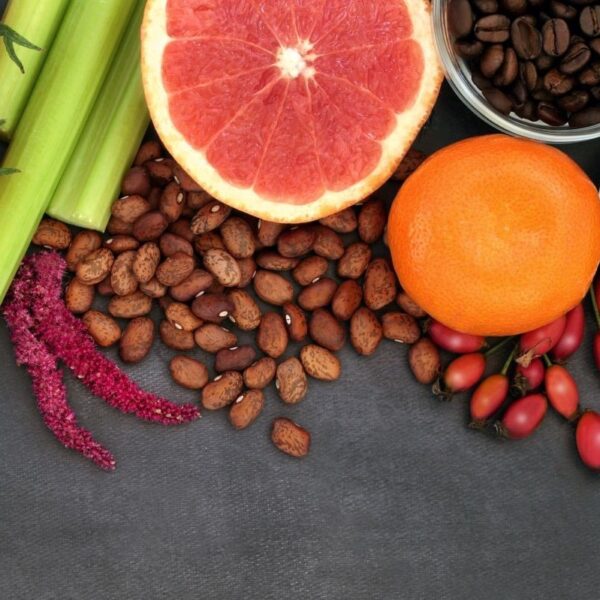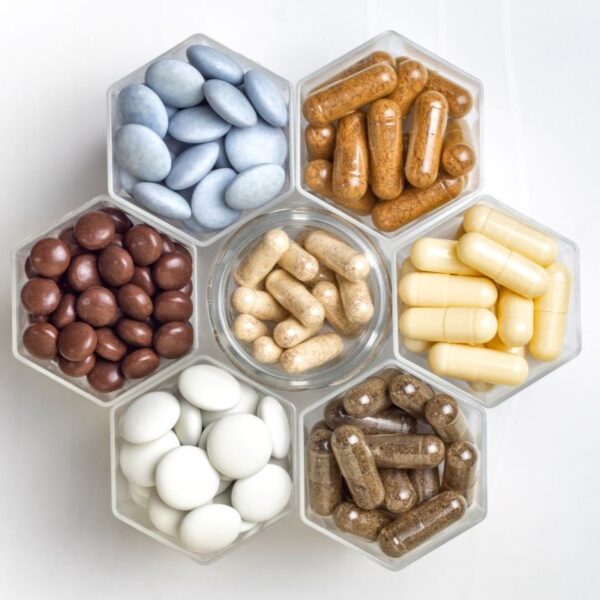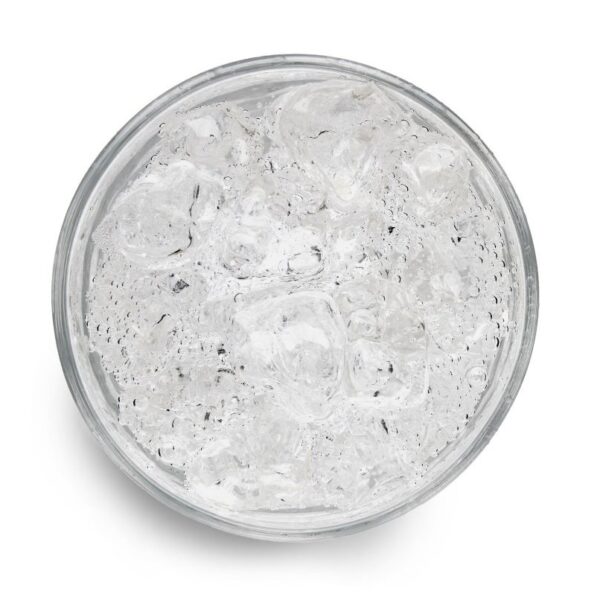Soy protein isolate, also known as isolated soy protein (ISP), is a popular plant-based protein source used in various foods, including protein supplements, protein bars, bread, pasta, meat analogs, and beverages. It is a complete protein containing all nine essential amino acids, making it especially beneficial nutritionally.
What is Soy Protein Isolate?
As the name suggests, soy protein isolate originates from soybeans. Soy protein isolate is the most highly refined and concentrated form of soy protein, with a minimum protein content of 90%.
How is Soy Protein Isolate Produced?
Soy protein isolate is obtained by removing nearly all fats and carbohydrates from soy flour. After defatting, one or more basic processes are used to remove carbohydrates: acid leaching, aqueous ethanol extraction, or moist heat-water leaching. These processes result in a concentrated protein of 70-80%. Additional purification steps, such as isoelectric precipitation or ultrafiltration, are taken to achieve at least 90% concentration. For food applications, minimal chemical modification is ideal.
Use and Applications of Soy Protein Isolate in Food and Nutrition
Thanks to its exceptional nutritional and functional properties, soy protein isolate is used in a wide variety of food products and nutritional products.
| Function | Applications |
| Protein Source | Cake, Bread, Cookies, Cereals, Chews, Bars, Chocolates, Ice Cream, Milk-Based High Protein Beverages, Paneer, Cheese, Vegan Milk, Non-Wairy Whiteners, Tofu, Cheese Analog, Noodles, Pasta, Chips, Protein Shakes and Drinks, Infant Formulas, Protein Powder |
| Binder | Chews, Bars, Chocolates, Ice Cream, Milk-Based High Protein Beverages, Paneer, Sausages, Salami, Vegan Meat, Burgers, Sausages |
| Emulsifier | Chews, Bars, Chocolates, Ice Cream, Milk-Based High Protein Beverages, Paneer, Sausages, Salami, Vegan Meat, Burgers, Sausages |
| Foaming Agent | Vegan Milk, Non-dairy Whiteners, Tofu, Cheese Analog |
| Extender | Sausages, Salami |
| Texturizing Agent | Chips, Snack Bars, Vegan meat, Burgers, Sausages,Cake, Bread, Cookies, Chews, Bars, Chocolates |
| Wetting Agent | Cake, Bread, Cookies |
Properties of Soy Protein Isolate
| Physical Form | Native: Powder Texturized: Granules, spun fibers, etc. |
| Color | Yellow-brown or solid brown color Decolored variants are available |
| Odor | Slightly beany or grassy |
| Shelf Life | ~12-24 months |
| Molecular Weight | 300,000 to 600,000 KDa |
| Appearance | Powder |
| pH | Close to neutral |
| Isoelectric pH | 4.5 |
| Density | 1.3±0.1 g/cm3 |
| Viscosity (8% solution) | 25-197 cP |
| Gelling Temperature | 84 °C |
| Denaturation Temperature | 93.3°C and 76.5°C for 11S and 7S globulin fractions respectively |
| Claims (*Product Specific) | Vegan, Halal*, Kosher*, Keto-friendly |
Recommended Storage and Handling
Soy protein isolate is hygroscopic and should be stored in an air-tight container in a cool, dark location for the best results. Exposure to moisture can allow bacteria to grow, and heat and light can degrade the powder over time.
Variants of Soy Protein Isolate
Soy protein isolate can be used in several forms. Each variant has certain characteristics that make it desirable for specific applications.
Proteinates
Isoelectric ISP has low solubility in water and limited functional activity. Different proteinates can be produced by neutralizing ISP with various bases, including sodium, potassium, ammonium, or calcium. The first three are highly soluble in water, creating solutions with very high viscosities, foaming, emulsification, and gel-forming properties. Calcium proteinate has low solubility. Low-solubility (inert) ISPs are used where the formulation calls for a high level of protein incorporation without excessive viscosity of other functional contributions.
Texturized Soy Protein Isolate
Structured forms of ISP, such as granules, spun fibers, and other fibrous structures, are made by texturization. Different methods may be used in texturization, including fiber spinning, electrospinning, mechanical elongation, shear cell technology, and extrusion. While soy protein isolate can be texturized as the total recipe, it is uncommon for it to be. In some cases, texturized ISP can be added to raw material blends to boost the protein content. Texturized Soy Protein will contribute to increased chewiness and tougher textures in the texturized product.
Fractions and Constituent Proteins
Soybean proteins can be divided into albumins, extracted by water, globulins, and extracted by dilute salt solutions. Soybean globulins consist of four fractions: 2S (15%), 7S (34%), 11S (41.9%), and 15S (9.1%), according to their sedimentation rates. The properties of soy protein isolate vary according to its composition.
Soybean proteins can be divided in albumins (10%), extracted by water, and globulins.
(90%), extracted by dilute salt solutions. 90% of the proteins in soybeans are storage proteins. βconglycinin and glycinin are the main components in storage proteins. β-conglycinin is a glycoprotein and a trimer, whereas glycinin comprises of two polypeptides.
Typical Formulations
Meat Analog
Here is an example of a meat analog formulation table made with soy protein isolate. In this formulation, isoelectric precipitated soy protein isolate was treated with Biorex 63 cation exchange resin (Na form).
| Ingredient | Composition (Parts by weight) |
| Soybean protein concentrate (70%) | 60 |
| Water | 40 |
| N-acetyl-L-methionine | 1.8 |
| Fat | 10 |
| Cation exchange treated soy protein isolate | 10 |
| Beef extract flavoring | 5 |
| Food coloring and salt | – |
Source: Google Patents
Ice Cream
Here is an example of an ice cream formulation table with soy protein isolate.
| Ingredient | % Composition |
| Whole Milk | 43% |
| Whipping Cream | 39% |
| Soy Protein Isolate | 2.3% |
| Skimmed Milk Powder | 2.3% |
| Sugar | 13% |
| Konjac Flour | 0.27% |
| Carrageenan | 0.3% |
| Vanilla Flavor | 0.1% |
Source: ResearchGate
Ready-to-Drink Protein-Rich Beverage
Here is an example of a ready-to-drink protein beverage formulation table.
| Ingredient | Composition (Parts by weight) |
| Soy Protein Isolate | 3.32 |
| Water | 83.79 |
| Sugar | 10 |
| Pectin | 0.3 |
| Natural Flavors | 2.59 |
Source: Google Patents
Soy Protein Isolate Formulation Considerations
| Stability | pH: 3.0- 9.0 Heat: 85°C >30 min Light: Labile Oxidation: Labile |
| Nutritional Profile | >90% Protein 0.5-1 % Fat 0.5-1 % Carbohydrates 5-9% Ash (Minerals) ~330 Cal/100 g |
| Sensory Attributes | ISP can be made practically free of objectionable odor, flavor, and color |
| Dosage | 2-10% (varies based on formulation) |
| Solubility | Soy protein isolate shows low solubility, around 10%, at its isoelectric point (between pH 4.0 and 5.0). The solubility increases as it distances from this point, particularly in more alkaline conditions, reaching 100% at pH 11.0. |
Effects on Functional Properties of Food Products
Various characteristics of soy protein isolate, and its variants significantly affect the functional properties of food and beverage formulations.
Rheological Properties
ISP can form protein gels in solution. However, it is a complex process, often involving denaturation, dissociation-association, and aggregation. In higher protein concentrations, the aggregation leads to gel formation, whereas in lower concentrations, it may lead to precipitation.
Rheological methods have shown that the minimal protein concentration of soy protein isolates for gelation is ~6.6%. Heat denaturation is a prerequisite for gel formation with ISP. β-Conglycinin gels were reported to be formed at about 55-70°C temperatures and glycinin gels at about 70-95°C. Gel stiffening on cooling was thermo-reversible and did not involve the covalent bond formation and rearrangements. Gel properties such as stiffness, fracture behavior, and water-holding capacity strongly depend on the protein composition, pH, salt concentration, protein concentration, and heating conditions.
The network formed upon gel formation by globular proteins can have different structures. Fine-stranded gels (strand thickness of just a few single protein molecules) can be completely transparent in contrast to coarse gels (strand thickness of up to 100-1000x of a single protein molecule). The structure becomes coarser as the solution reaches an isoelectric point or increases ionic strength. Network structure affects the rheological properties of the gel. The permeability of the gels and the ability to retain water decreases when the network structure coarsens.
Textural Properties
Soy protein isolate is a texturizing agent in food formulations when used in its native or texturized form. ISP can contribute to superior textural properties of food in terms of springiness, cohesiveness, chewiness, and hardness. Texturized ISP has been reported to improve the texture of processed meat products and paneer when used in higher concentrations.
For manufacturing complex meat analogs, binder functionality is crucial. In restructured meat products, on the other hand, such as ham, soy protein can contribute to the adherence of separate meat pieces together to form a composite solid. It provides the required binder functionality upon undergoing heat-induced gelation. For the protein to work as an adhesive, covalent crosslinking must generate a matrix with sufficient integrity. Trans-glutaminase has been reported to increase the cross-linking and adhesion properties.
Phase Stability
Proteins have been shown to stabilize emulsions by forming a viscoelastic, adsorbed layer on oil droplets, which form a physical barrier to coalescence. The lipophilic and hydrophilic groups in the soy protein polymer chains interact with fat and water, respectively. Also, the increased viscosity of the system due to the gelling properties of protein decreases the tendency of phase separation.
The composition-conformation of the protein affects its emulsifying ability. One such reported example is 11S globulin in soy protein, which has two identical hexamers. In its native form, most hydrophilic components face outwards, and hydrophobic subunits face inwards. Because of the close-packed globular and larger molecular size conformation in the native protein, its foaming properties and emulsifying abilities are limited. Similarly, the concentration of protein, as well as pH, solubility, and temperature, will impact its emulsifying ability. Low surface hydrophobicity, low molecular flexibility, and large molecular size of glycinin negatively affect its emulsifying ability.
Various methods, including physical, chemical, or enzymatic treatment, can modify the properties of soy protein. This involves partial denaturation or unfolding of the protein, leading to improved emulsifying properties.
Challenges
Soy protein isolate powders often have poor water solubility, particularly at pH values close to neutral.
In 2020, GMO soybeans comprised 94% of all soybeans planted in the US. Increasing public awareness and aversion towards GMO products has created a concern for product formulators.
Safety & Regulatory Considerations
Soy protein isolate is regulated by the Food and Drug Administration (FDA) in the United States. The FDA requires that soy protein isolate meet certain purity, safety, and nutritional content standards. The FDA also requires that soy protein isolate be labeled with a nutrition facts for any proposed health claim and labeled with an allergen statement listing any potential allergens in the product.
Health Benefits of Soy Protein Isolate
Soy protein isolate is a high-quality protein with a protein digestibility-corrected amino acid score (PDCAAS) of 1.00, similar to that of proteins from animal sources. The bioavailability of soy protein has been reported to be ~74% and digestibility to be 96%.
Soy protein isolate is considered to be hypoallergenic, making it a suitable choice for many people with food allergies or sensitivities. It does not contain the allergens in significant quantities as other soy products, such as soy flour.
Identification Numbers
| Chemical Name | Soy Protein Isolate |
| CAS Number | 9010-10-0 |
Fun Facts About Soy Protein Isolate
- In 1936, organic chemist Percy Lavon Julian designed the world’s first plant to isolate industrial-grade soy protein. It was primarily used as a pigment binder for paper coatings.
- Processed soy protein is used in foods primarily in three forms: soy flour, soy protein isolates, and soy protein concentrates. Isolates are the most highly refined and concentrated.






